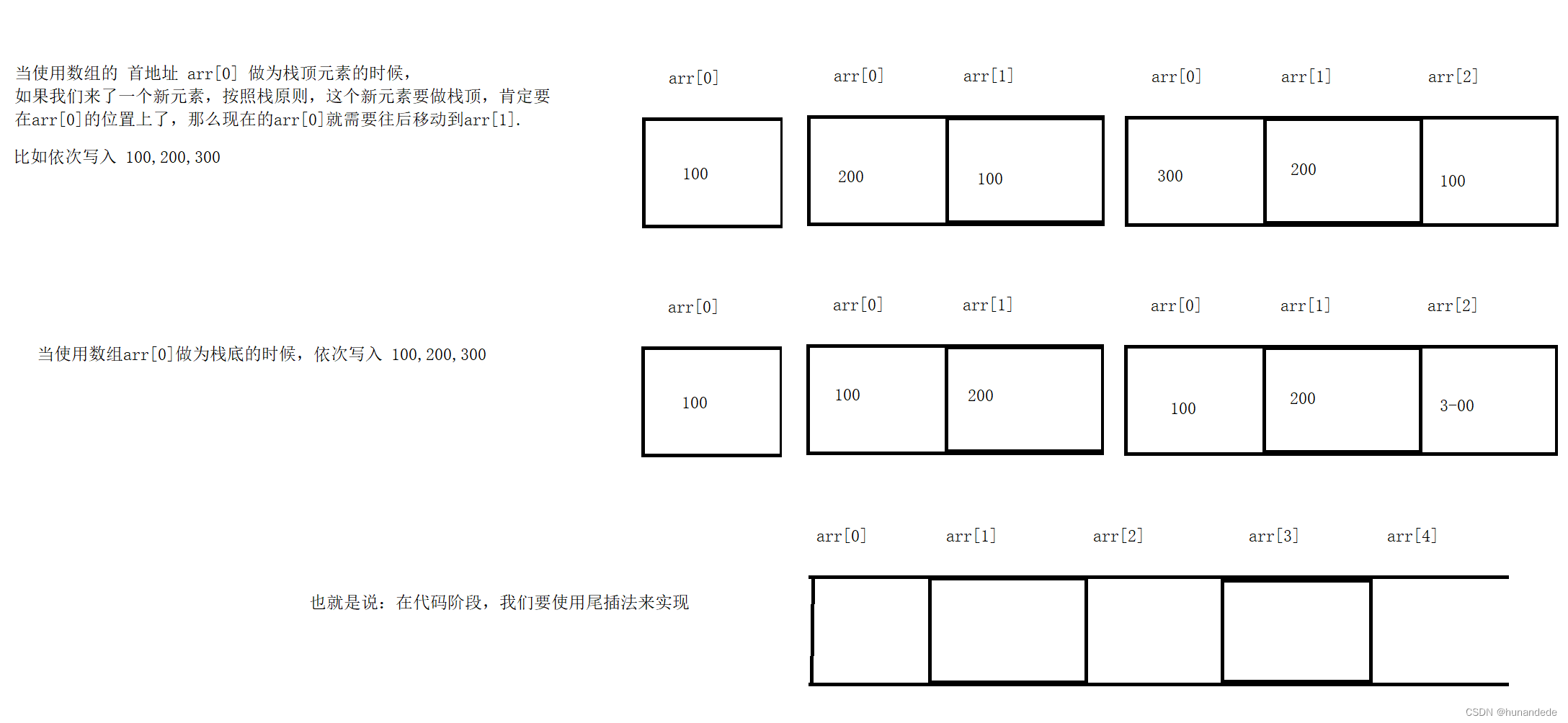😁博客主页😁:🚀https://blog.csdn.net/wkd_007🚀
🤑博客内容🤑:🍭嵌入式开发、Linux、C语言、C++、数据结构、音视频🍭
⏰发布时间⏰:
本文未经允许,不得转发!!!
目录
- 🎄一、概述
- 🎄二、条件变量相关思考
- ✨2.1 为什么需要条件变量?
- 🎄三、条件等待相关思考
- ✨3.1 pthread_cond_wait 函数做了什么操作?
- ✨3.2 条件变量为什么需要和互斥量一起使用?
- ✨3.3 既然互斥量和条件变量关系如此紧密,为什么不干脆将互斥量变成条件变量的一部分呢?
- ✨3.4 互斥量加锁的临界区应该包含哪些操作?
- ✨3.5 为什么条件等待时,使用while来判断条件,而不是用if ?
- 🎄四、条件唤醒相关思考
- 4.1 先唤醒后解锁,还是先解锁后唤醒?
- 4.2 使用 pthread_cond_broadcast 唤醒所有线程后,各个线程是怎样接着运行的?
- 🎄五、总结
![]()
🎄一、概述
上篇文章介绍了条件变量,可以学会怎样使用,但有些问题介绍的比较分散,本文主要是做个补充,从下面几个问题进行展开,你也可以先看看是否可以知道答案。
1、为什么需要条件变量?
2、pthread_cond_wait 函数做了什么操作?
3、条件变量为什么需要和互斥量一起使用?
4、既然互斥量和条件变量关系如此紧密,为什么不干脆将互斥量变成条件变量的一部分呢?
5、互斥量加锁的临界区应该包含哪些操作?
6、为什么条件等待时,使用while来判断条件,而不是用if ?
while(list_empty(&productList)) // 条件不满足
{
pthread_cond_wait(&product_cond, &product_mutex);
}
7、先唤醒后解锁,还是先解锁后唤醒?
本文的某些问题会给出示例代码,下面是一个是会用的头文件linux_list.h,它是Linux内核使用的一个链表。需要了解使用方法的,可以看这文章【数据结构】list.h 详细使用教程
先在这里给出:
// my_list.h 2023-09-24 23:07:43
#ifndef _LINUX_LIST_H
#define _LINUX_LIST_H
struct list_head {
struct list_head *next, *prev;
};
#define INIT_LIST_HEAD(ptr) do { \
(ptr)->next = (ptr); (ptr)->prev = (ptr); \
} while (0)
/**
* list_empty - tests whether a list is empty
* @head: the list to test.
*/
static inline int list_empty(const struct list_head *head)
{
return head->next == head;
}
/*
* Insert a new entry between two known consecutive entries.
*
* This is only for internal list manipulation where we know
* the prev/next entries already!
*/
static inline void __list_add(struct list_head *new_node,
struct list_head *prev,
struct list_head *next)
{
next->prev = new_node;
new_node->next = next;
new_node->prev = prev;
prev->next = new_node;
}
/**
* list_add - add a new entry
* @new: new entry to be added
* @head: list head to add it after
*
* Insert a new entry after the specified head.
* This is good for implementing stacks.
*/
static inline void list_add(struct list_head *new_node, struct list_head *head)
{
__list_add(new_node, head, head->next);
}
/**
* list_add_tail - add a new entry
* @new: new entry to be added
* @head: list head to add it before
*
* Insert a new entry before the specified head.
* This is useful for implementing queues.
*/
static inline void list_add_tail(struct list_head *new_node, struct list_head *head)
{
__list_add(new_node, head->prev, head);
}
/*
* Delete a list entry by making the prev/next entries
* point to each other.
*
* This is only for internal list manipulation where we know
* the prev/next entries already!
*/
static inline void __list_del(struct list_head * prev, struct list_head * next)
{
next->prev = prev;
prev->next = next;
}
/**
* list_del - deletes entry from list.
* @entry: the element to delete from the list.
* Note: list_empty on entry does not return true after this, the entry is
* in an undefined state.
*/
static inline void list_del(struct list_head *entry)
{
__list_del(entry->prev, entry->next);
//entry->next = (struct list_head *)LIST_POISON1;
//entry->prev = (struct list_head *)LIST_POISON2;
}
#ifndef offsetof
#define offsetof(type, f) ((size_t) \
((char *)&((type *)0)->f - (char *)(type *)0))
#endif
#ifndef container_of
#define container_of(ptr, type, member) ({ \
const typeof( ((type *)0)->member ) *__mptr = (ptr);\
(type *)( (char *)__mptr - offsetof(type,member) );})
#endif
/**
* list_entry - get the struct for this entry
* @ptr: the &struct list_head pointer.
* @type: the type of the struct this is embedded in.
* @member: the name of the list_struct within the struct.
*/
#define list_entry(ptr, type, member) \
container_of(ptr, type, member)
#ifndef ARCH_HAS_PREFETCH
static inline void prefetch(const void *x) {;}
#endif
/**
* list_for_each - iterate over a list
* @pos: the &struct list_head to use as a loop counter.
* @head: the head for your list.
*/
#define list_for_each(pos, head) \
for (pos = (head)->next; prefetch(pos->next), pos != (head); \
pos = pos->next)
/**
* list_for_each_safe - iterate over a list safe against removal of list entry
* @pos: the &struct list_head to use as a loop counter.
* @n: another &struct list_head to use as temporary storage
* @head: the head for your list.
*/
#define list_for_each_safe(pos, n, head) \
for (pos = (head)->next, n = pos->next; pos != (head); \
pos = n, n = pos->next)
/**
* list_for_each_entry - iterate over list of given type
* @pos: the type * to use as a loop counter.
* @head: the head for your list.
* @member: the name of the list_struct within the struct.
*/
#define list_for_each_entry(pos, head, member) \
for (pos = list_entry((head)->next, typeof(*pos), member); \
prefetch(pos->member.next), &pos->member != (head); \
pos = list_entry(pos->member.next, typeof(*pos), member))
#endif //_LINUX_LIST_H
![]()
🎄二、条件变量相关思考
✨2.1 为什么需要条件变量?
参考答案:
因为如果不使用条件变量,线程就需要 轮询+休眠 来查看是否满足条件,这样严重影响效率。
下面是不使用条件变量的代码,th_consumer线程需要轮询查看是否有数据(条件是否满足),并且需要通过sleep函数休眠来释放CPU给其他线程:
// 09_producer_consumer.c
// gcc 09_producer_consumer.c -lpthread
#include <stdio.h>
#include <stdlib.h>
#include <pthread.h>
#include "linux_list.h"
#define COMSUMER_NUM 2
typedef struct _product
{
struct list_head list_node;
int product_id;
}product_t;
struct list_head productList;// 头结点
pthread_mutex_t product_mutex = PTHREAD_MUTEX_INITIALIZER; // productList 的互斥量
// 生产者线程,1秒生成一个产品放到链表
void *th_producer(void *arg)
{
int id = 0;
while(1)
{
product_t *pProduct = (product_t*)malloc(sizeof(product_t));
pProduct->product_id = id++;
pthread_mutex_lock(&product_mutex);
list_add_tail(&pProduct->list_node, &productList);
pthread_mutex_unlock(&product_mutex);
sleep(1);
}
return NULL;
}
// 消费者线程,1秒消耗掉一个产品
void *th_consumer(void *arg)
{
while(1)
{
pthread_mutex_lock(&product_mutex);
if(!list_empty(&productList)) // 不为空,则取出一个
{
product_t* pProduct = list_entry(productList.next, product_t, list_node);// 获取第一个节点
printf("consumer[%d] get product id=%d\n", *((int*)arg), pProduct->product_id);
list_del(productList.next); // 删除第一个节点
free(pProduct);
}
pthread_mutex_unlock(&product_mutex);
sleep(1);
}
return NULL;
}
int main()
{
INIT_LIST_HEAD(&productList); // 初始化链表
// 创建生产者线程
pthread_t producer_thid;
pthread_create(&producer_thid, NULL, th_producer, NULL);
// 创建消费者线程
pthread_t consumer_thid[COMSUMER_NUM];
int i=0, num[COMSUMER_NUM]={0,};
for(i=0; i<COMSUMER_NUM; i++)
{
num[i] = i;
pthread_create(&consumer_thid[i], NULL, th_consumer, &num[i]);
}
// 等待线程
pthread_join(producer_thid, NULL);
for(i=0; i<COMSUMER_NUM; i++)
{
pthread_join(consumer_thid[i], NULL);
}
return 0;
}
下面是使用了条件变量的代码,不需要sleep函数去等待,条件不满足时,会阻塞在条件等待函数pthread_cond_wait上,等条件满足时,其他线程会唤醒这个阻塞的线程。
// 09_producer_consumer_cond.c
// gcc 09_producer_consumer_cond.c -lpthread
#include <stdio.h>
#include <stdlib.h>
#include <pthread.h>
#include <string.h>
#include <errno.h>
#include "linux_list.h"
#define COMSUMER_NUM 2
typedef struct _product
{
struct list_head list_node;
int product_id;
}product_t;
struct list_head productList;// 头结点
pthread_mutex_t product_mutex = PTHREAD_MUTEX_INITIALIZER; // productList 的互斥量
pthread_cond_t product_cond = PTHREAD_COND_INITIALIZER; // 条件变量
// 生产者线程,1秒生成一个产品放到链表
void *th_producer(void *arg)
{
int id = 0;
while(1)
{
product_t *pProduct = (product_t*)malloc(sizeof(product_t));
pProduct->product_id = id++;
pthread_mutex_lock(&product_mutex);
list_add_tail(&pProduct->list_node, &productList);
pthread_cond_signal(&product_cond);
pthread_mutex_unlock(&product_mutex);
sleep(1);
}
return NULL;
}
// 消费者线程,1秒消耗掉一个产品
void *th_consumer(void *arg)
{
while(1)
{
pthread_mutex_lock(&product_mutex);
while(list_empty(&productList)) // 条件不满足
{
pthread_cond_wait(&product_cond, &product_mutex);
}
// 不为空,则取出一个
product_t* pProduct = list_entry(productList.next, product_t, list_node);// 获取第一个节点
printf("consumer[%d] get product id=%d\n", *((int*)arg), pProduct->product_id);
list_del(productList.next); // 删除第一个节点
free(pProduct);
pthread_mutex_unlock(&product_mutex);
}
return NULL;
}
int main()
{
INIT_LIST_HEAD(&productList); // 初始化链表
// 创建生产者线程
pthread_t producer_thid;
pthread_create(&producer_thid, NULL, th_producer, NULL);
// 创建消费者线程
pthread_t consumer_thid[COMSUMER_NUM];
int i=0, num[COMSUMER_NUM]={0,};
for(i=0; i<COMSUMER_NUM; i++)
{
num[i] = i;
pthread_create(&consumer_thid[i], NULL, th_consumer, &num[i]);
}
// 等待线程
pthread_join(producer_thid, NULL);
for(i=0; i<COMSUMER_NUM; i++)
{
pthread_join(consumer_thid[i], NULL);
}
return 0;
}
![]()
🎄三、条件等待相关思考
✨3.1 pthread_cond_wait 函数做了什么操作?
参考答案:
①条件等待时,pthread_cond_wait 函数做了两个操作:解锁、阻塞。也就是说,会先将传入的互斥量解锁,然后使线程阻塞等待。
②pthread_cond_wait 函数返回时,系统会确保该线程再次持有互斥量(加锁)。
✨3.2 条件变量为什么需要和互斥量一起使用?
参考答案:
①如果某个线程因条件不满足而阻塞等待,那么需要另一个线程来改变条件才能使条件满足。这样的话,这个条件所关联到的数据就是共享数据,没有互斥量,就无法安全地获取和修改共享数据。
②如果仅仅是判断条件,那么在判断条件后解锁即可。但我们需要的是“判断条件、解锁、等待”,为了使这三个步骤之间不会被其他线程打断,我们需要条件变量、互斥量一起使用。至于“判断条件、解锁、等待”不能被打断的原因,看3.4小节。
pthread_mutex_lock(&product_mutex); // 互斥量加锁
while(list_empty(&productList)) // 判断条件
{
pthread_cond_wait(&product_cond, &product_mutex);// 解锁、等待
}
// ...
pthread_mutex_unlock(&product_mutex);// 互斥量释放锁
✨3.3 既然互斥量和条件变量关系如此紧密,为什么不干脆将互斥量变成条件变量的一部分呢?
参考答案:
因为同一个互斥量上可能有不同的条件变量,比如说,有的线程希望当共享数据为单数时唤醒它,有些线程则希望当共享数据为双数时发送通知给它。
这里又多了一个问题,多个条件变量怎么跟一个互斥量共同使用。直接看下面多个条件变量的例子,代码定义了一个互斥量和三个条件变量,根据当前共享数据除以3的余数分别通知三个线程:
// 09_producer_consumer_multiple_cond.c
// gcc 09_producer_consumer_multiple_cond.c -lpthread
#include <stdio.h>
#include <stdlib.h>
#include <pthread.h>
#include <string.h>
#include <errno.h>
#include "linux_list.h"
#define COMSUMER_NUM 3
typedef struct _product
{
struct list_head list_node;
int product_id;
}product_t;
struct list_head productList;// 头结点
pthread_mutex_t product_mutex = PTHREAD_MUTEX_INITIALIZER; // productList 的互斥量
pthread_cond_t product_cond = PTHREAD_COND_INITIALIZER; // 条件变量
pthread_cond_t product_cond_1 = PTHREAD_COND_INITIALIZER; // 条件变量, 余数为1
pthread_cond_t product_cond_2 = PTHREAD_COND_INITIALIZER; // 条件变量, 余数为2
// 生产者线程,1秒生成一个产品放到链表
void *th_producer(void *arg)
{
int id = 0;
while(1)
{
product_t *pProduct = (product_t*)malloc(sizeof(product_t));
pProduct->product_id = id++;
pthread_mutex_lock(&product_mutex);
list_add_tail(&pProduct->list_node, &productList);
if((pProduct->product_id % COMSUMER_NUM) == 0)
pthread_cond_signal(&product_cond);
else if((pProduct->product_id % COMSUMER_NUM) == 1)
pthread_cond_signal(&product_cond_1);
else
pthread_cond_signal(&product_cond_2);
pthread_mutex_unlock(&product_mutex);
sleep(1);
}
return NULL;
}
// 消费者线程,1秒消耗掉一个产品
void *th_consumer(void *arg)
{
int id = *((int*)arg);
while(1)
{
pthread_mutex_lock(&product_mutex);
while(list_empty(&productList)) // 条件不满足
{
//printf("consumer[%d] cond_wait\n", *((int*)arg));
if(id == 0)
{
pthread_cond_wait(&product_cond, &product_mutex);
}
else if(id == 1)
{
pthread_cond_wait(&product_cond_1, &product_mutex);
}
else
{
pthread_cond_wait(&product_cond_2, &product_mutex);
}
}
// 不为空,则取出一个
product_t* pProduct = list_entry(productList.next, product_t, list_node);// 获取第一个节点
printf("consumer[%d] get product id=%d\n", *((int*)arg), pProduct->product_id);
list_del(productList.next); // 删除第一个节点
free(pProduct);
pthread_mutex_unlock(&product_mutex);
}
return NULL;
}
int main()
{
INIT_LIST_HEAD(&productList); // 初始化链表
// 创建生产者线程
pthread_t producer_thid;
pthread_create(&producer_thid, NULL, th_producer, NULL);
// 创建消费者线程
pthread_t consumer_thid[COMSUMER_NUM];
int i=0, num[COMSUMER_NUM]={0,};
for(i=0; i<COMSUMER_NUM; i++)
{
num[i] = i;
pthread_create(&consumer_thid[i], NULL, th_consumer, &num[i]);
}
// 等待线程
pthread_join(producer_thid, NULL);
for(i=0; i<COMSUMER_NUM; i++)
{
pthread_join(consumer_thid[i], NULL);
}
return 0;
}
✨3.4 互斥量加锁的临界区应该包含哪些操作?
参考答案:
首先清楚一点,使用条件变量时需要互斥量是因为多个线程访问、修改共享数据。其次是互斥量加锁的临界区是我们希望连续执行、不被其他线程打断的操作。所以,在条件等待时,互斥量加锁的临界区应该是访问共享数据(查询条件是否满足) --> 解锁、等待(pthread_cond_wait)。在条件唤醒时,互斥量必须加锁的临界区是修改共享数据.
条件等待时,“判断条件、解锁、等待”这三个为什么不可以被打断呢?因为判断条件和pthread_cond_wait之前被打断的话,可能在判断条件之后,调用pthread_cond_wait之前,条件变量就被唤醒了,导致该线程一直等待下去。
下面通过例子来说明为什么“判断条件、解锁、等待”不能被打断,下面例子中,通过宏 SEPARATE_CONT_WAIT 定义为1来模拟判断条件、pthread_cond_wait分开的情况,SEPARATE_CONT_WAIT 定义为0则表示判断条件、pthread_cond_wait不会被打断。
// 09_producer_consumer_cond_loss.c
// gcc 09_producer_consumer_cond_loss.c -lpthread
#include <stdio.h>
#include <stdlib.h>
#include <pthread.h>
#include <string.h>
#include <errno.h>
#include "linux_list.h"
#define COMSUMER_NUM 1
#define SEPARATE_CONT_WAIT 1 // 为1表示分开 判断条件、pthread_cond_wait
typedef struct _product
{
struct list_head list_node;
int product_id;
}product_t;
struct list_head productList;// 头结点
pthread_mutex_t product_mutex = PTHREAD_MUTEX_INITIALIZER; // productList 的互斥量
pthread_cond_t product_cond = PTHREAD_COND_INITIALIZER; // 条件变量
// 生产者线程,只生成一个产品放到链表
void *th_producer(void *arg)
{
int id = 0;
//while(1)
{
product_t *pProduct = (product_t*)malloc(sizeof(product_t));
pProduct->product_id = id++;
pthread_mutex_lock(&product_mutex);
list_add_tail(&pProduct->list_node, &productList);
pthread_cond_signal(&product_cond);
pthread_mutex_unlock(&product_mutex);
printf("pthread_cond_signal\n");
sleep(1);
}
return NULL;
}
// 消费者线程,1秒消耗掉一个产品
void *th_consumer(void *arg)
{
while(1)
{
pthread_mutex_lock(&product_mutex);
while(list_empty(&productList)) // 条件不满足
{
#if SEPARATE_CONT_WAIT
pthread_mutex_unlock(&product_mutex);
sleep(3); // 加大延时,模拟 判断条件、pthread_cond_wait 之间被打断的情况
pthread_mutex_lock(&product_mutex);
#endif
printf("pthread_cond_wait\n");
pthread_cond_wait(&product_cond, &product_mutex);
}
// 不为空,则取出一个
product_t* pProduct = list_entry(productList.next, product_t, list_node);// 获取第一个节点
printf("consumer[%d] get product id=%d\n", *((int*)arg), pProduct->product_id);
list_del(productList.next); // 删除第一个节点
free(pProduct);
pthread_mutex_unlock(&product_mutex);
}
return NULL;
}
int main()
{
INIT_LIST_HEAD(&productList); // 初始化链表
// 创建生产者线程
pthread_t producer_thid;
pthread_create(&producer_thid, NULL, th_producer, NULL);
// 创建消费者线程
pthread_t consumer_thid[COMSUMER_NUM];
int i=0, num[COMSUMER_NUM]={0,};
for(i=0; i<COMSUMER_NUM; i++)
{
num[i] = i;
pthread_create(&consumer_thid[i], NULL, th_consumer, &num[i]);
}
// 等待线程
pthread_join(producer_thid, NULL);
for(i=0; i<COMSUMER_NUM; i++)
{
pthread_join(consumer_thid[i], NULL);
}
return 0;
}
下面是"判断条件、pthread_cond_wait" 被打断的运行结果,会出现唤醒丢失,一直等待:

✨3.5 为什么条件等待时,使用while来判断条件,而不是用if ?
参考答案:
为了让线程被唤醒后,再次判断条件是否满足。这样做是因为存在虚假唤醒,也就是说,条件尚未满足, pthread_cond_wait就返回了。
下面使用pthread_cond_broadcast来模拟虚假唤醒,看看while和if的区别:
1、创建2个线程,运行后进入条件等待;
2、创建1个线程,5秒后使用 pthread_cond_broadcast 唤醒所有等待线程;
3、先醒来的线程,醒来后,条件是满足的,获取到数据。后面醒来的线程,由于数据被前面的线程拿走了,此时条件应该不满足的,但它没再次判断,直接取数据导致程序出问题。
// 09_producer_consumer_cond_brocast.c
// gcc 09_producer_consumer_cond_brocast.c -lpthread
#include <stdio.h>
#include <stdlib.h>
#include <pthread.h>
#include <string.h>
#include <errno.h>
#include "linux_list.h"
#define COMSUMER_NUM 2
typedef struct _product
{
struct list_head list_node;
int product_id;
}product_t;
struct list_head productList;// 头结点
pthread_mutex_t product_mutex = PTHREAD_MUTEX_INITIALIZER; // productList 的互斥量
pthread_cond_t product_cond = PTHREAD_COND_INITIALIZER; // 条件变量
// 生产者线程,5秒后生成一个产品放到链表
void *th_producer(void *arg)
{
int id = 0;
//while(1)
sleep(5);
{
product_t *pProduct = (product_t*)malloc(sizeof(product_t));
pProduct->product_id = id++;
pthread_mutex_lock(&product_mutex);
list_add_tail(&pProduct->list_node, &productList);
pthread_cond_broadcast(&product_cond);
pthread_mutex_unlock(&product_mutex);
sleep(1);
}
return NULL;
}
// 消费者线程,1秒消耗掉一个产品
void *th_consumer(void *arg)
{
while(1)
{
pthread_mutex_lock(&product_mutex);
if(list_empty(&productList)) // 条件不满足
//while(list_empty(&productList)) // 条件不满足
{
pthread_cond_wait(&product_cond, &product_mutex);
}
// 不为空,则取出一个
product_t* pProduct = list_entry(productList.next, product_t, list_node);// 获取第一个节点
printf("consumer[%d] get product id=%d\n", *((int*)arg), pProduct->product_id);
list_del(productList.next); // 删除第一个节点
free(pProduct);
pthread_mutex_unlock(&product_mutex);
}
return NULL;
}
int main()
{
INIT_LIST_HEAD(&productList); // 初始化链表
// 创建生产者线程
pthread_t producer_thid;
pthread_create(&producer_thid, NULL, th_producer, NULL);
// 创建消费者线程
pthread_t consumer_thid[COMSUMER_NUM];
int i=0, num[COMSUMER_NUM]={0,};
for(i=0; i<COMSUMER_NUM; i++)
{
num[i] = i;
pthread_create(&consumer_thid[i], NULL, th_consumer, &num[i]);
}
// 等待线程
pthread_join(producer_thid, NULL);
for(i=0; i<COMSUMER_NUM; i++)
{
pthread_join(consumer_thid[i], NULL);
}
return 0;
}
![]()
🎄四、条件唤醒相关思考
4.1 先唤醒后解锁,还是先解锁后唤醒?
参考答案:
“先唤醒后解锁” 会比 “先解锁后唤醒” 的效率更低一点。条件等待的线程会从pthread_cond_wait函数返回,pthread_cond_wait函数返回时,系统会确保该线程再次持有互斥量(加锁)。“先唤醒后解锁” 会导致线程醒来后,由于互斥量还没释放,需要继续等待互斥量释放后才能继续执行。而 “先解锁后唤醒” 则不会出现这种情况。但是,实际使用过程中,这两种都可以,不用特别在意这点效率。
4.2 使用 pthread_cond_broadcast 唤醒所有线程后,各个线程是怎样接着运行的?
参考答案:
pthread_cond_broadcast 唤醒所有线程后,被唤醒的线程都会从 pthread_cond_wait 函数返回,但要从 pthread_cond_wait 返回需要先拿到互斥量并加锁。于是,各个线程会先去争夺互斥量,第一个抢到互斥量的线程先从 pthread_cond_wait 返回,继续往下执行,其他的线程则阻塞等待继续争夺互斥量。就这样,各个线程依次的抢到互斥量,再从 pthread_cond_wait 返回,往下执行。
![]()
🎄五、总结
本文总结了使用条件变量过程中,一些遇到的问题,并给出了一些自认为正确的参考答案。如果有不同想法,欢迎留言探讨。

如果文章有帮助的话,点赞👍、收藏⭐,支持一波,谢谢 😁😁😁

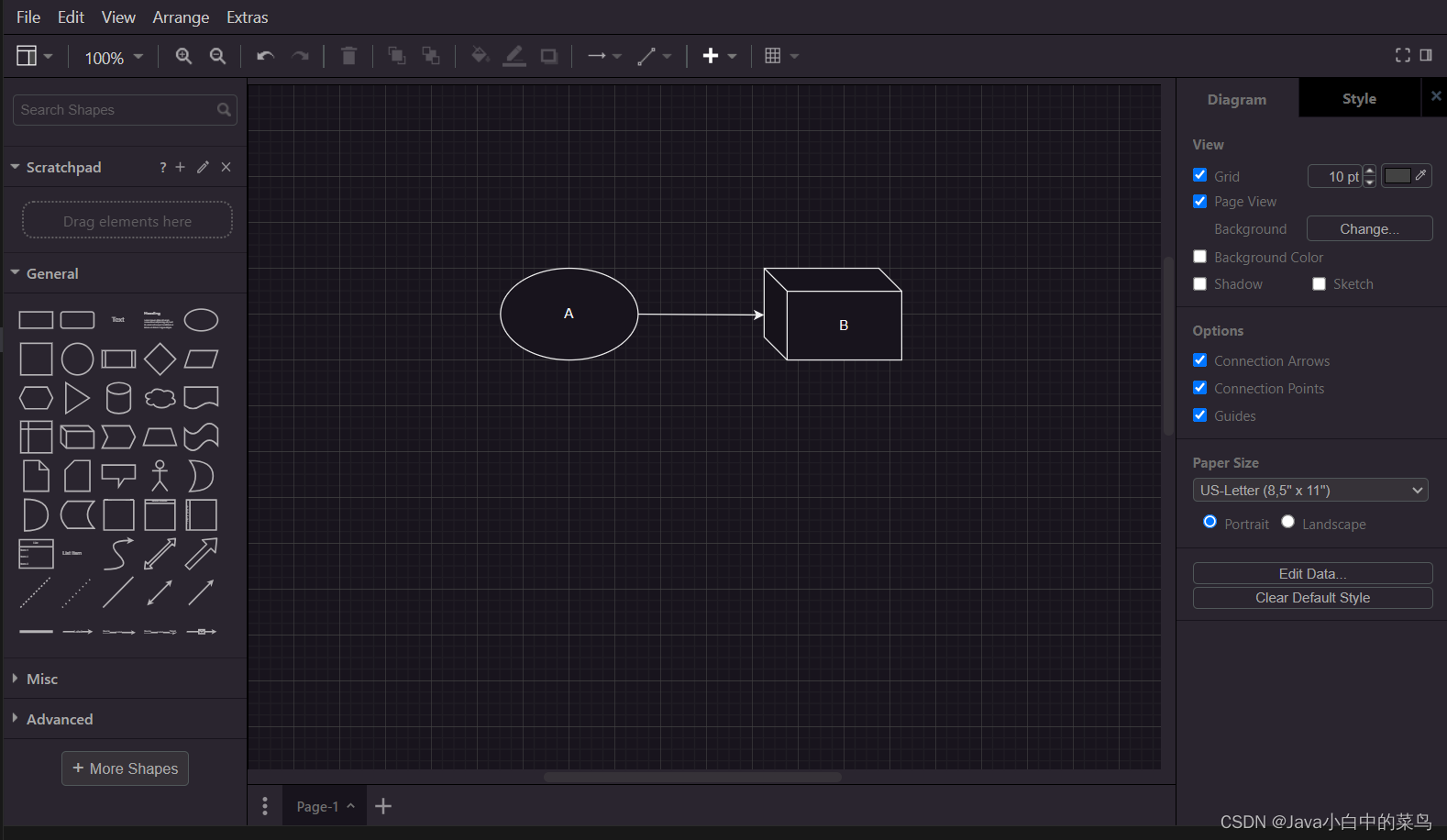



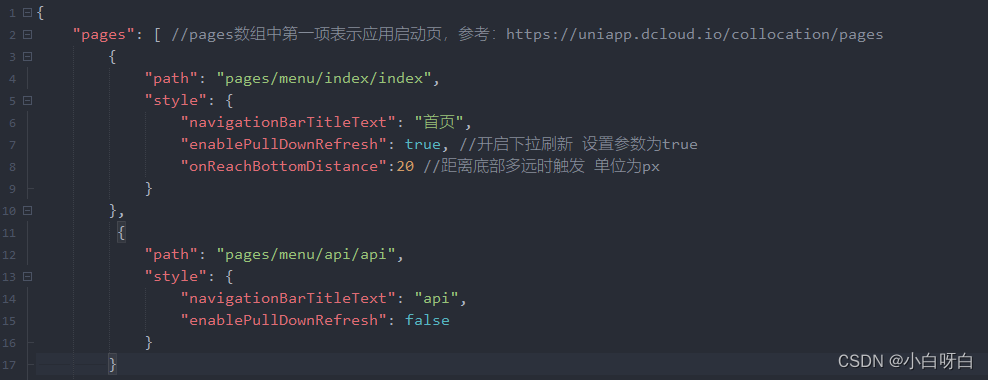
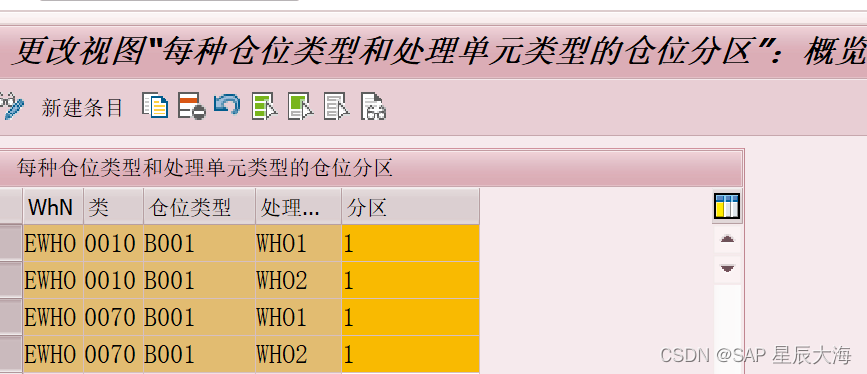
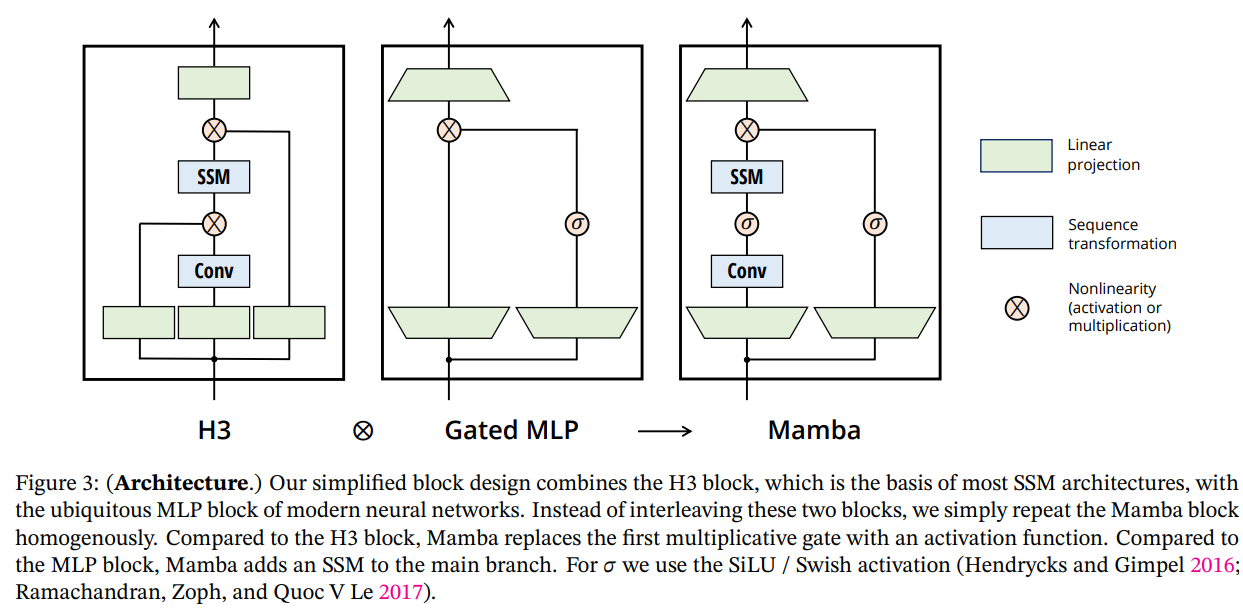





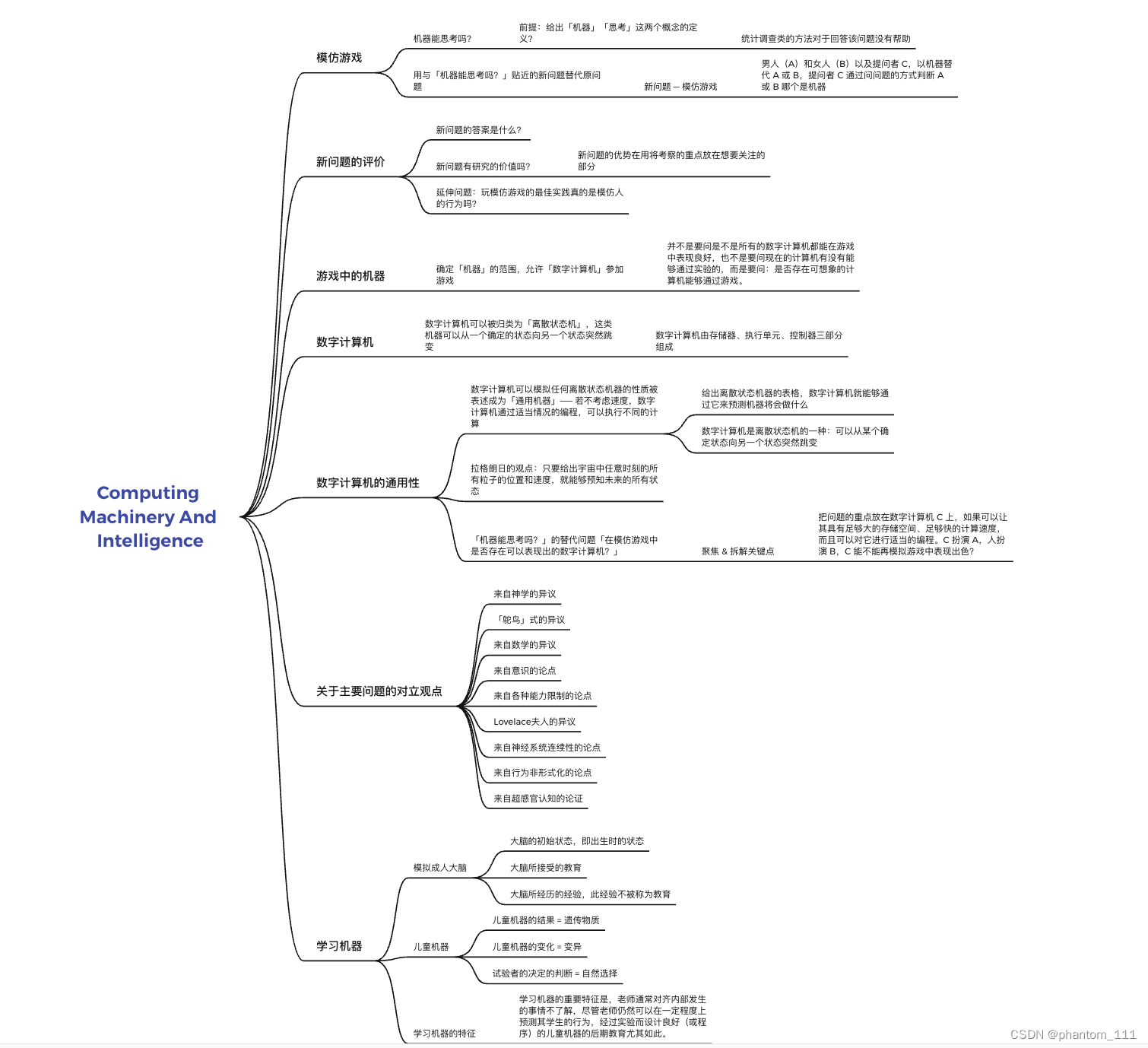

![[lesson33]C++中的字符串类](https://img-blog.csdnimg.cn/direct/8ec2075e3c5a4a799ddf7bf4fc606012.png#pic_center)

